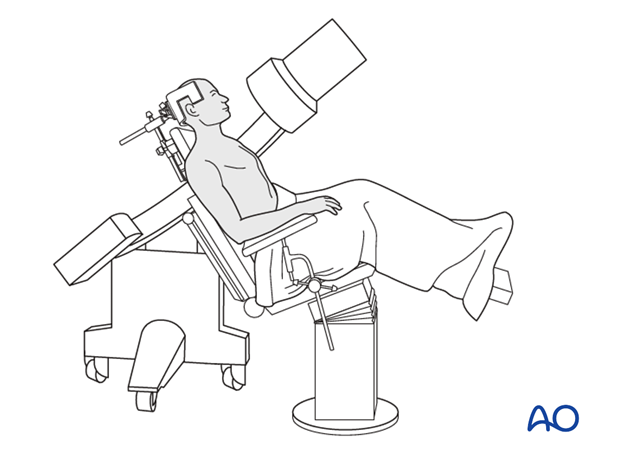Beach chair position for the management of clavicle fractures
1. Introduction
Proper patient positioning is crucial as incorrect positioning will keep the surgeon from performing a successful operation.
The beach chair provides anterior and lateral access to the shoulder joint while prohibiting posterior open approaches.
2. Advantages and disadvantages
Advantages:
- Use of the image intensifier is facilitated
- It provides anterior and lateral access to the shoulder joint
Disadvantages:
- A true axial view of the clavicle is almost impossible
- The patient's medical condition may be a contraindication (ie, hypotension)
- Prohibits posterior open approaches
3. Positioning
The patient is seated and the trunk is elevated to an angle of 30-45°. The extremity should be draped free to facilitate motion of the shoulder which may aid in reduction.
The patient should be comfortably positioned with a pillow or wedge under the knee and the sides should be padded.
The head is carefully positioned and secured on a special head rest.
Depending on the part that needs to be imaged, one must move the image intensifier into an appropriate position with radiation hazards in mind.
Note: Hyperextension of the shoulder should be avoided in order to prevent tension on the brachial plexus and rotation of the neck may be limited due to degenerative disk disease.

4. Intraoperative imaging
The image intensifier is placed in such a way that imaging of the desired area is possible. The X-ray beam should be centered on the area of interest.
Beam direction for clavicular fractures:
- Anteriorposterior view of the clavicle
- 20-30 degrees cephalad view
If available, a 3D-scan using a 3D-image intensifier will give the most details of the result.

5. Alternative inclination
If the beach chair position is to be used for an arthroscopic procedure or an open posterior shoulder approach may be required, a more upright position is preferred with the trunk elevated 70-90 degrees.













